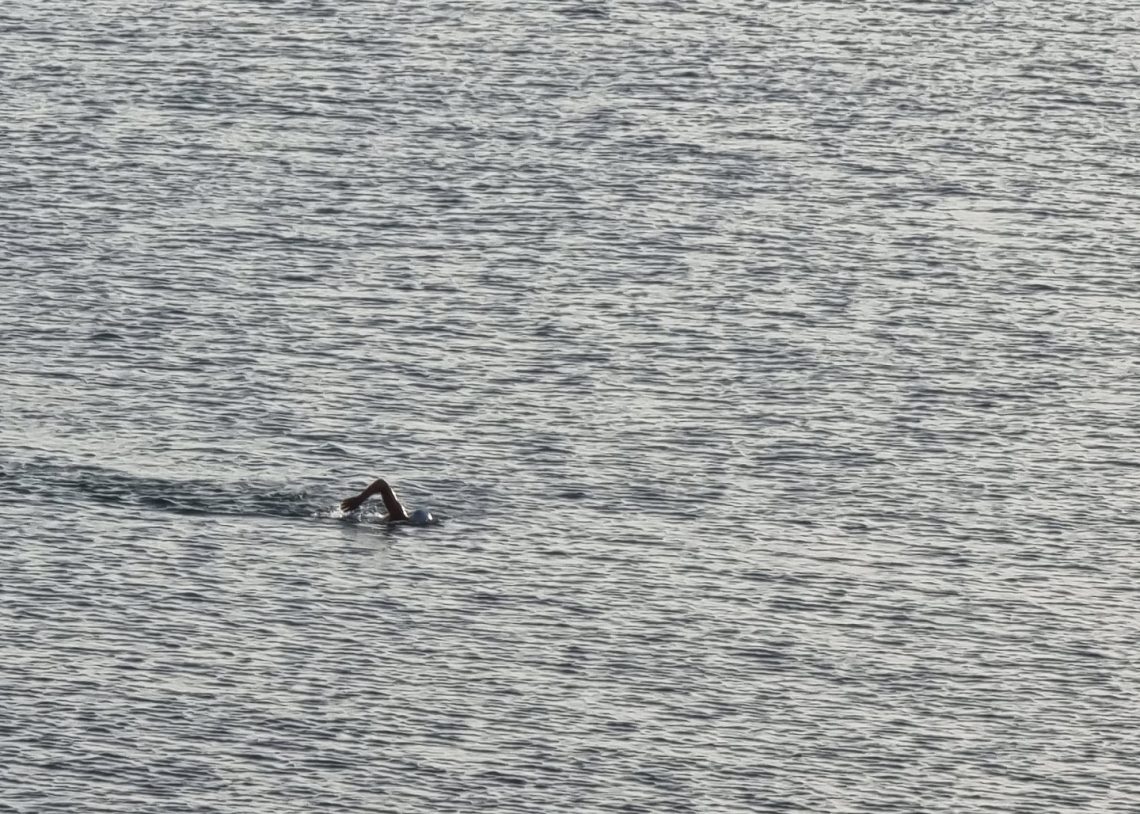
Keep calm and carry on – and other sea swimming tips
These tips are primarily aimed at swimmers taking part in near-shore organised swim events or wild swimming rather than long-distance sea swimmers. Please feel free to send us more tips and suggestions.
Assess Conditions
Assess the conditions before you swim. Look at wave height, the regularity of the waves and time between waves. Look how the waves break, and how quickly they break. As well as the regular waves look how choppy the water is. Check the wind direction and strength. Look for evidence of currents – both rip currents and drift along the shore.
Ask experienced swimmers
Ask more experienced swimmers and life guards about the conditions and what the things you see mean for your swim.
Check the tide
Find out what’s happening with the tide, what the tidal range is and whether the tide will have any impact on your swim – e.g. changing currents, uncovering hazards (such as rocks) or changing your entry and exit points.
Scout the beach
If you have a beach start look to see what you’ll be running over, whether there are sharp shells or stones to avoid and how steeply the beach slopes. How far will you run before you start swimming? Will you dive under or jump over the waves?
Adjust to the waves
In the water the waves look much bigger than they did from the shore. Use your first minute or so in the water to adjust and get a feel for the rhythm of the sea. Resist the temptation to go in too hard. You might need the energy later. Don’t fight your way through but time your efforts to match conditions.
Follow other swimmers
Once swimming you may find it difficult to see the marker buoys because of the waves and chop. Accept that you might have to look up several times before you can see where you’re going and don’t be too concerned if you can’t see where you are immediately. Although following the swimmers around you isn’t always the best idea, in rough sea conditions it’s probably the best bet if you can’t see the route markers.
Beach sighting
As well as trying to sight by looking forwards, also look back towards the beach. This will almost certainly be easier to see and will help you to know that you’ve swum out straight or whether the current has dragged you one way or another. You can also use the shore for sighting when you’re swimming parallel to it, especially if you can breathe both sides.
Maintain momentum
Try to resist the temptation to stop if you can’t see where to go. Unless you’ve gone far off course in most cases it’s better to maintain momentum.
Sight at wave tops
Try to sight when you’re on top of wave. You’ll see more.
Swim diagonally
If the current is strong you may need to angle your body diagonally to the direction you want to go in for the most direct line.
Match stroke to waves
In rough conditions your normal stroke rate will be disrupted. Trying to force it will exhaust you quickly. Instead try to match your stroke to the pattern in the waves, even if it’s a lower stroke rate than you’d normally use. Be sensitive to how this changes depending on which direction you’re swimming.
Focus on technique
Forget about a fast time and concentrate instead on keeping your stroke as good as possible.
Accept the chop
Allow the sea to bounce you around. Don’t fight it. Try to enjoy being tossed about by the waves as you make your way through them.
Shutting your mouth
Sometimes you get smacked in the face by a wave just as you turn to breathe. Be ready to shut your mouth quickly and hold your breath until the next stroke.
Go with the flow
When swimming with the waves coming from behind kick harder and increase speed as the wave picks you up and relax once it’s gone underneath you.
Exiting the sea
As you finish, it’s usually quicker to keep swimming until your finger hit the bottom, and watch the waves as you stand up to make sure you don’t get knocked straight back down.
Stay calm
When the going gets tough, keep calm and carry on.
See more expert advice from qualified lifeguards for planning a sea swim.








